Maximizing productivity in the workplace requires the right tools, and Slack has proven to be an indispensable platform for team collaboration. Slack productivity tools not only facilitate communication but also enhance overall workflow efficiency. One of the platform's distinct advantages is its ability to integrate with a myriad of applications, which can dramatically improve team dynamics and project management. Here, we will explore ten clever Slack integrations that can take your team's productivity to new heights.
Essential Slack Productivity Tools
When it comes to workplace collaboration, Slack productivity tools are crucial for ensuring that teams communicate effectively and manage projects with ease. They serve to bridge gaps, promote transparency, and streamline tasks. By utilizing integrations with specialized tools, teams can not only stay organized but also react promptly to changing priorities. These productivity enhancements often lead to increased employee satisfaction, faster project completions, and reduced miscommunication among team members.
Integration #1: Project Management Tool
Integrating project management tools like Trello or Asana with Slack can drastically improve task tracking and accountability. Imagine a scenario where a project manager assigns a task in Trello. Through Slack integration, team members receive instant notifications about new assignments, updates, or deadline changes directly within their Slack channels.
Key benefits of Trello and Asana integrations include:
- Instant Notifications: Stay updated without leaving Slack.
- Task Overviews: Quickly check the status of tasks right from the Slack interface.
- Commenting: Collaborate easily by adding comments to tasks without opening another app.
This seamless connection facilitates better communication and reduces the time spent switching between applications.
Integration #2: Scheduled Reminders Feature
Slack already comes with a built-in reminder tool that can significantly aid in managing deadlines. By using the /remind command, team members can set reminders for project milestones, upcoming meetings, or personal tasks.
Benefits of using Slack's reminder tool are:
- Custom Notifications: Tailor reminders to individual work habits.
- Recurring Reminders: Ensure that periodic tasks are never overlooked.
- Clarity on Deadlines: Keep everyone on the same page regarding project timelines.
In a busy environment, these reminders help avoid missed deadlines and improve time management across the board.
Integration #3: Time Tracking Application
Effective time management is vital for any team, and integrating a time tracking tool like Harvest with Slack can help keep everyone accountable. Team members can log their hours directly from Slack, simplifying the process of tracking time spent on various tasks.
Here’s why Harvest integration makes sense:
- Quick Time Entry: Easily log hours without navigating away from Slack.
- Daily Summaries: Receive reminders to report hours worked at day’s end.
- Reporting: Gain insights into time allocation for better resource management.
With digitized time tracking, managers and employees become more aware of productivity patterns and can adjust workflows accordingly.
Integration #4: File Sharing and Management
Collaboration often requires sharing documents and files; hence, integrating Google Drive or Dropbox into Slack simplifies this process dramatically. Instead of sending multiple emails or switching apps, team members can share files directly within Slack channels.
Key features of these integrations include:
- Direct Access: Retrieve and send documents without hassle.
- Real-Time Collaboration: Edit and comment on documents in real-time.
- Version Control: Easily track changes and maintain the most up-to-date files.
This leads to a more organized workspace and less time wasted searching for files.
Integration #5: Survey and Feedback Tools
Collecting feedback efficiently is crucial for team improvement. Integrating tools like Polly or SurveyMonkey with Slack allows teams to create surveys quickly and gather insights without breaking their workflow.
Benefits of using survey integrations are:
- Instant Polls: Conduct quick polls to gauge team sentiment.
- Feedback Collection: Easily gather opinions on various topics.
- Engagement Tracking: Analyze responses to improve future initiatives.
Such tools can provide valuable data that can lead teams to make better decisions based on collective input.
Integration #6: Communication Aids
While Slack itself is a powerful communication platform, integrating tools like Zoom or Microsoft Teams can enhance the experience further. These integrations allow for quick video calls or chats without needing to switch platforms.
The advantages of using communication aids include:
- Quick Video Calls: Initiate meetings with a simple click.
- Chat Features: Use messaging apps' dedicated features for a smoother experience.
- Record Keeping: Automatically save important conversations and video calls for future reference.
These integrations enable teams to collaborate in real-time, streamlining discussions that require immediate attention.
Integration #7: Custom Bots for Routine Tasks
Automating repetitive tasks can free up valuable time, and custom bots in Slack can handle this efficiently. By creating or integrating tools like Zapier, businesses can set up bots that automate routine actions.
Consider these helpful functions of custom bots:
- Daily Standups: Automatically remind team members to submit their daily progress.
- Onboarding Assistance: Guide new employees through essential processes.
- Notification Management: Filter and send relevant updates to specific channels.
Employing bots not only enhances efficiency but also allows team members to focus on higher-value tasks.
Integration #8: Analytics and Reporting Tools
Understanding team performance through data is essential for continuous improvement. Integrating analytics tools, such as Simple Analytics, with Slack empowers teams to track various metrics effortlessly.
The benefits of using analytics integrations include:
- Real-Time Insights: Obtain instant reports on team performance.
- Goal Tracking: Visualize progress towards milestones with ease.
- Actionable Data: Utilize insights to inform future strategies.
By keeping analytics accessible, teams can consistently refine their approaches for better results.
Integration #9: Calendar Sync
Maintaining a synchronized schedule is pivotal for team success. Integrating Google Calendar or Outlook with Slack can keep everyone updated on meetings and deadlines.
Key aspects of calendar integrations are:
- Reminders and Alerts: Reduce scheduling conflicts with timely notifications.
- Event Creation: Schedule meetings directly from Slack in seconds.
- Centralized Information: Keep important dates visible for all team members.
Having calendar insights directly in Slack fosters better planning and prioritization.
Integration #10: Wellness and Break Reminders
A sustainable work environment includes a focus on well-being. Tools that remind team members to take breaks can help alleviate burnout. Options such as Stand Up or custom reminders within Slack can be integrated easily.
The importance of wellness reminders comprises:
- Structured Breaks: Encourage team members to take necessary downtime.
- Health Monitoring: Support overall well-being and productivity.
- Culture Building: Promote a workplace culture that values mental health.
Incorporating wellness reminders ensures that teams stay refreshed and engaged throughout their workday.
Wrapping Up
Incorporating Slack productivity tools through integrations can significantly enhance both team communication and workflow efficiency. By leveraging project management tools, time tracking applications, and communication aids, teams can operate more seamlessly. Integrating file sharing and analytics tools ensures that everyone has access to the right information at the right time. Moreover, custom bots, calendar sync features, and wellness reminders can foster a more organized and supportive work environment.
Exploring and adopting these integrations can lead teams toward improved performance and greater satisfaction, paving the way for a more efficient and cohesive workplace.




